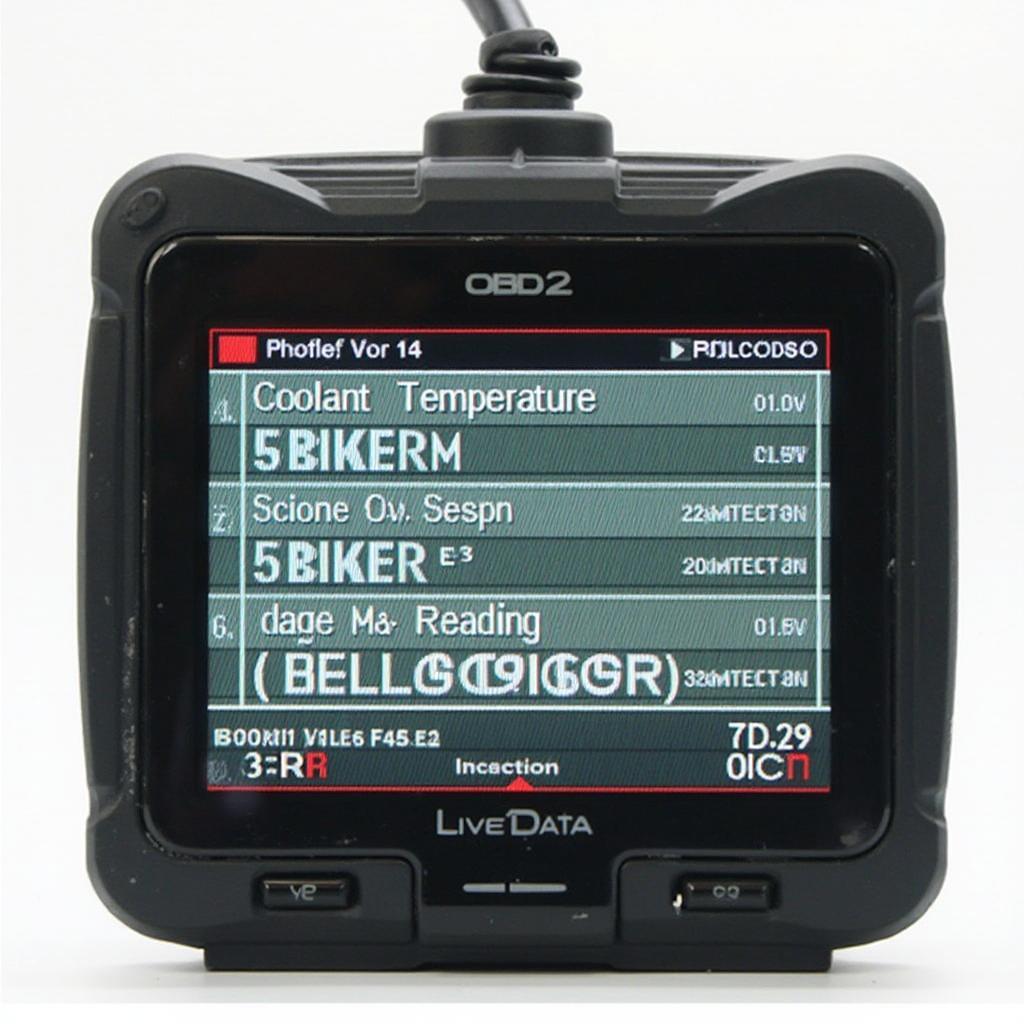Normal OBD2 live reading is crucial for understanding your vehicle’s health. By interpreting these readings, you can identify potential issues early, saving time and money on repairs. This article will delve into the intricacies of OBD2 live data, explaining what constitutes “normal” readings and how to interpret them effectively.
Understanding your car’s OBD2 live reading can be like having a conversation with your vehicle. It tells you what’s happening under the hood in real-time, providing valuable insights into its performance and health. But what exactly is a “normal” reading, and how can you interpret the data to ensure your car is running smoothly?
Decoding Normal OBD2 Live Data
OBD2, or On-Board Diagnostics II, is a standardized system that allows you to access your vehicle’s diagnostic data. Live data, specifically, refers to the real-time stream of information from various sensors throughout your car. These sensors monitor everything from engine speed and coolant temperature to fuel pressure and oxygen sensor activity. A normal obd2 live reading provides a baseline for comparison, helping you identify deviations that could indicate a problem.
 Normal OBD2 Live Data Readings
Normal OBD2 Live Data Readings
What Factors Influence Normal Readings?
“Normal” readings can vary slightly depending on the vehicle’s make, model, and operating conditions. Factors like engine temperature, ambient temperature, and driving style can all influence the live data stream. For example, a cold engine will naturally have a richer air-fuel mixture than a warm engine. Understanding these nuances is key to accurate interpretation.
What’s normal for a Chevy might not be normal for a Mazda. Understanding your specific vehicle’s specifications is key. Resources like normal data for 07 mazda3 2.0 obd2 live data can provide valuable insights for specific car models.
Common OBD2 Live Data Parameters and Their Normal Ranges
Several key parameters are commonly monitored through OBD2 live data. These include:
- Engine RPM: Typically between 600-1000 RPM at idle.
- Coolant Temperature: Around 195-220 degrees Fahrenheit once the engine has warmed up.
- Oxygen Sensor Voltage: Fluctuates between 0.1 and 0.9 volts, indicating proper air-fuel mixture.
- Mass Air Flow (MAF) Sensor: Varies depending on engine size and RPM but should be consistent.
- Manifold Absolute Pressure (MAP) Sensor: Measures intake manifold pressure and typically ranges between 14.7 psi at idle to higher values under acceleration.
Knowing the normal range for obd2 live data oil pressure is particularly crucial for engine health.
How to Interpret Deviations from Normal OBD2 Live Reading?
Deviations from normal readings can signal potential issues. For example, consistently high coolant temperature might indicate a problem with the cooling system. Similarly, a fluctuating or low oxygen sensor voltage could suggest a faulty sensor or a problem with the fuel system. Knowing what to look for can help you diagnose problems early on.
“Understanding OBD2 data isn’t about memorizing numbers, it’s about recognizing patterns and deviations. Consistent deviations are usually a red flag.” says Robert Miller, Automotive Diagnostic Specialist at Miller’s Auto Repair.
Using OBD2 Live Data for Troubleshooting
OBD2 live data is a powerful tool for troubleshooting car problems. By monitoring the live data stream while performing specific tests, you can pinpoint the source of an issue more effectively. This can save you from unnecessary repairs by allowing you to focus on the specific problem area.
For specific vehicle models like the Chevy Blazer, understanding normal obd2 readings for chevy blazer 4.3 can be particularly helpful in troubleshooting. Furthermore, understanding the difference between open loop vs closed loop obd2 can give valuable insights into the engine’s fuel management system.
“Think of your OBD2 scanner as a detective’s magnifying glass, allowing you to zoom in on the root cause of your car’s issues,” adds Maria Sanchez, Lead Mechanic at Sanchez Automotive Solutions.
Conclusion
Understanding normal OBD2 live reading is essential for maintaining your vehicle’s health and performance. By learning how to interpret this data, you can identify potential problems early, save money on repairs, and keep your car running smoothly. Using the insights provided in this article, you can confidently navigate the world of OBD2 live data and take proactive steps to ensure your vehicle’s optimal performance.
FAQ
-
What is OBD2 live data? OBD2 live data is real-time information from your car’s sensors.
-
Why is understanding normal OBD2 live readings important? It helps you identify potential problems early.
-
How can I access OBD2 live data? You need an OBD2 scanner.
-
Do normal readings vary between vehicles? Yes, they can vary based on make, model, and conditions.
-
What are some common OBD2 live data parameters? Engine RPM, coolant temperature, oxygen sensor voltage, MAF sensor, and MAP sensor.
Need assistance? Contact us via WhatsApp: +1(641)206-8880, Email: [email protected] or visit us at 789 Elm Street, San Francisco, CA 94102, USA. Our customer support team is available 24/7.
